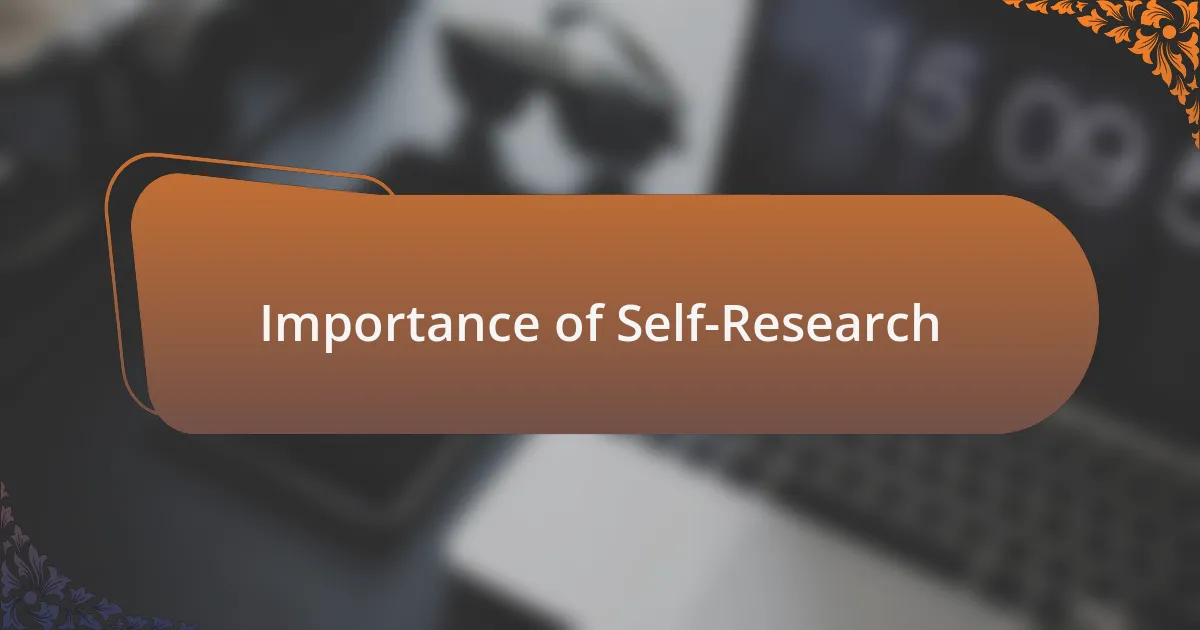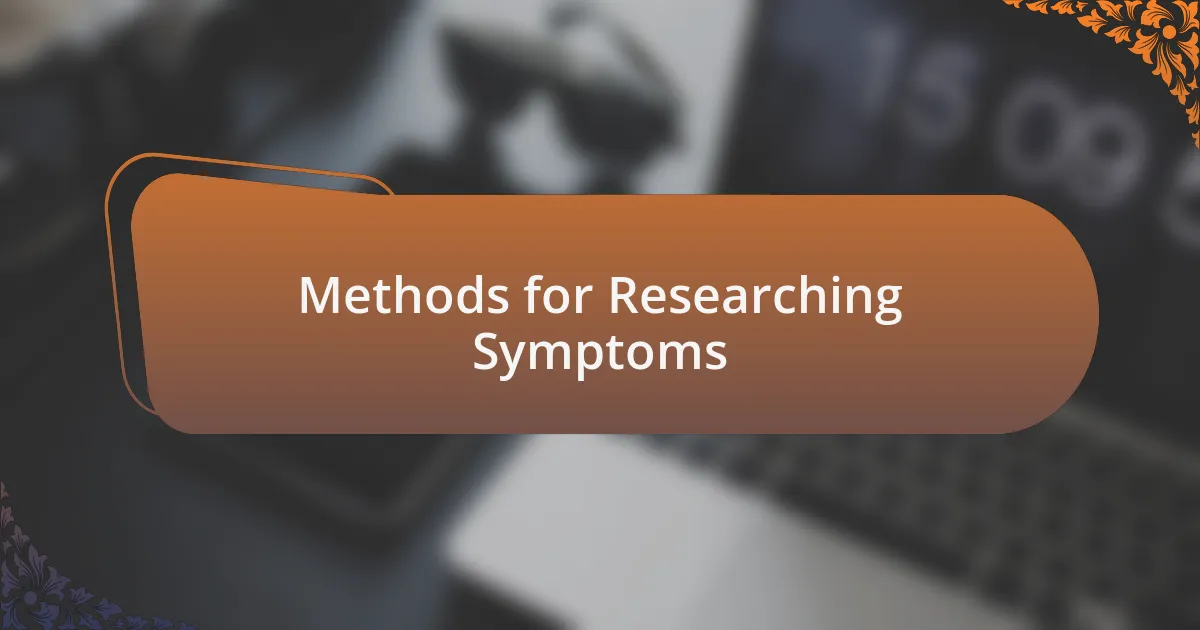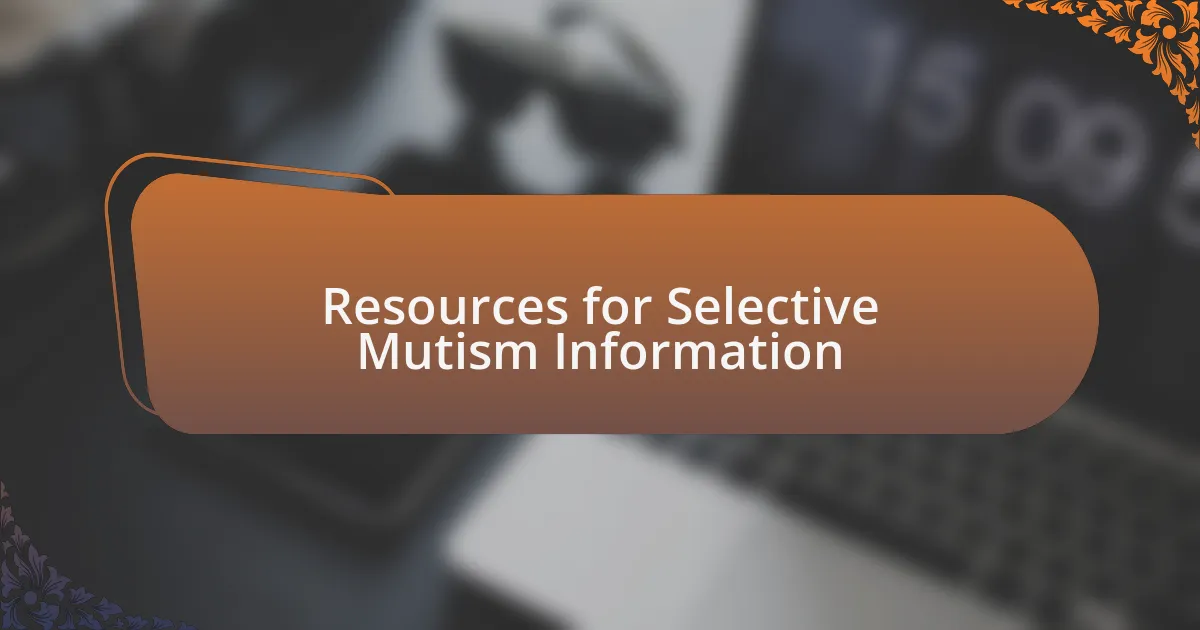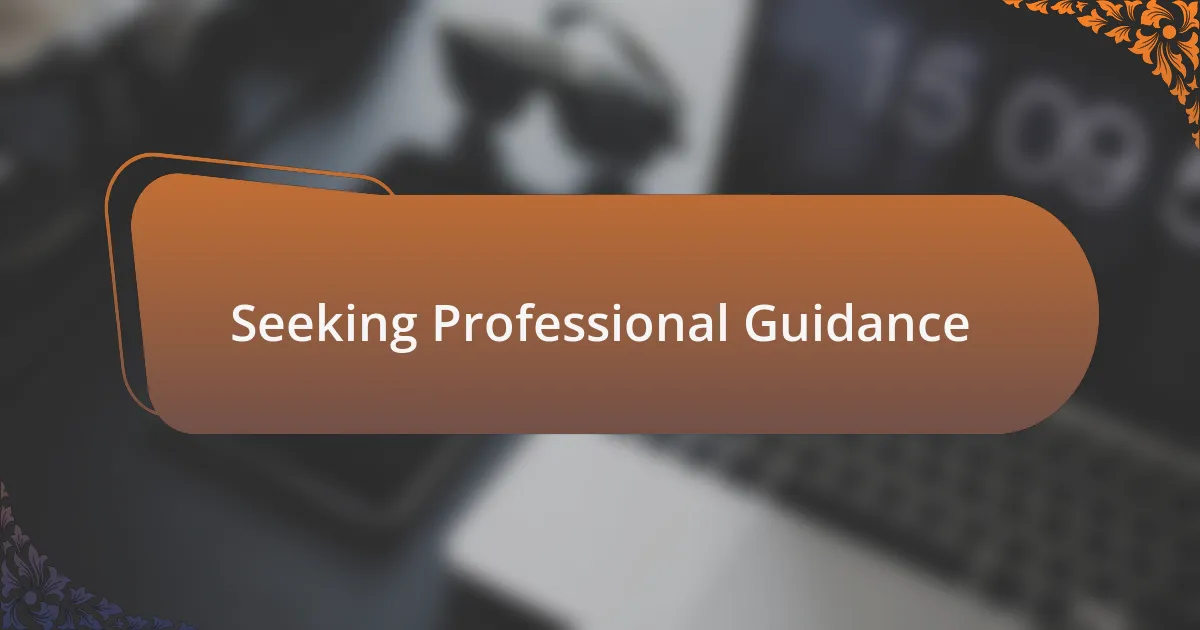Key takeaways:
- Selective mutism is a complex anxiety disorder that manifests as an inability to speak in specific social settings despite having the ability to communicate in others.
- Recognizing symptoms involves understanding the unique experiences of individuals, which often include avoidance behaviors and inconsistency in speech across different environments.
- Self-research and documentation of personal experiences can empower individuals to understand their own challenges and identify coping strategies.
- Seeking professional guidance can provide essential support, tools, and safe spaces to navigate the complexities of selective mutism effectively.

Understanding Selective Mutism
Selective mutism is a complex anxiety disorder often emerging in childhood, characterized by a consistent inability to speak in specific social situations despite having the ability to speak in other settings. I remember observing my friend struggle in class while being perfectly vocal at home—it made me wonder how fear could silence someone who had so much to say. Isn’t it fascinating how this selective silence isn’t a choice but rather a protective response to overwhelming anxiety?
For many, selective mutism can feel isolating and frustrating, not just for the individual but also for their loved ones. It’s heartbreaking to witness someone you care about wanting to engage but being trapped by their own fears. I often found myself wondering if I could somehow bridge that emotional gap and help them find their voice again. This silence, though sometimes misinterpreted as defiance or shyness, is far from a lack of desire to communicate.
The experience of selective mutism varies greatly from person to person, which makes it crucial to approach each situation with empathy and understanding. I have learned that every silent struggle carries a unique story, and listening—truly listening—can be the first step toward breaking the silence. Have you ever considered how deep-rooted anxieties might shape someone’s ability to connect? It’s a reminder that for many, stepping into the world of spoken communication is a brave journey filled with hurdles that require patience and compassion to overcome.

Recognizing Symptoms of Selective Mutism
Recognizing symptoms of selective mutism can be a challenge, especially when the signs are subtle. For instance, I remember a child I once saw at a park who played happily alongside friends but would freeze up when an adult approached. It struck me how this child wanted to engage yet was held back by invisible barriers, showcasing that the symptoms often manifest not just in silence, but also in anxious body language.
It’s common for those affected by selective mutism to exhibit avoidance behaviors, like refusing eye contact or turning away from interactions. I recall a moment in my own life when I attended a family gathering; I felt this overwhelming urge to retreat into a corner rather than join in on conversations. This instinct to withdraw can be misread as rudeness or disinterest by others, when in fact, it stems from a profound fear of speaking that needs understanding and compassion.
Another crucial symptom is the inconsistency in speech—where a child may chat freely at home but becomes mute in school. This duality can confuse parents and educators. Have you ever noticed how someone can shine in familiar settings but struggle in new environments? That’s what makes selective mutism particularly heartbreaking; it highlights the desire to communicate, yet the fear of being misunderstood holds them back.

Importance of Self-Research
When I first started researching my symptoms, I realized how empowering it was to seek answers on my own terms. It gave me the chance to explore experiences that resonated with my feelings, making the invisible struggle of selective mutism feel more tangible. Have you ever taken a moment to reflect on your own instincts and reactions? That introspection can reveal connections and patterns that might go unnoticed in the chaos of daily life.
Diving into self-research not only helped clarify my symptoms but also highlighted the various coping mechanisms others had adopted. I vividly remember reading about someone who utilized deep breathing exercises before speaking to alleviate anxiety. This knowledge inspired me to experiment with similar techniques in my life, transforming a sense of helplessness into a proactive approach to managing my condition.
Moreover, self-research fosters a deeper understanding of one’s own mental health journey. When I stumbled upon anecdotes from others facing similar challenges, I felt a wave of relief wash over me. It was comforting to realize I wasn’t alone in my struggles, and this sense of community becomes invaluable. Have you ever felt that sense of belonging after connecting with someone’s story? It’s often the most profound part of the healing process.

Methods for Researching Symptoms
One effective method for researching symptoms is utilizing reputable online resources. I remember spending hours on mental health websites, diving into articles and forums dedicated to selective mutism. This way, I could glean insights not only from professionals but also from individuals sharing their personal experiences. Have you ever found yourself navigating a rabbit hole of information, only to emerge with a clearer understanding of your situation?
Another approach I found beneficial was journaling my thoughts and feelings. By documenting my experiences with selective mutism, I could track patterns or triggers that influenced my speech or anxiety levels. This practice allowed me not only to reflect on my journey but it also provided concrete data to discuss with my therapist later. Isn’t it fascinating how putting pen to paper can illuminate aspects of our lives that we might otherwise overlook?
Engaging with support groups, whether in-person or online, became a cornerstone of my research. Hearing others resonate with my struggles made the experience of selective mutism less isolating, and their shared coping strategies offered practical solutions. Have you thought about how others’ perspectives might guide you in your own journey? I can assure you that the collective wisdom found in these groups is truly transformative.

Resources for Selective Mutism Information
When it came to finding resources on selective mutism, I often relied on established organizations dedicated to the cause. Groups like the Selective Mutism Association provided me access to research articles, videos, and even webinars. Connecting with these resources felt like having a guiding light on my journey, illuminating the complexities of my experience. Have you checked out these organizations? They can really serve as a foundational platform in your search for understanding.
I also found that engaging in social media groups focused on selective mutism offered a wealth of information. It was refreshing to see others discussing their challenges and triumphs, creating a sense of community. One particular discussion about coping mechanisms resonated with me deeply and prompted me to try new strategies I had never considered. Isn’t it incredible how a shared sentiment can lead us to new insights?
Additionally, I sought out books authored by mental health professionals specializing in anxiety and communication disorders. Reading about their perspectives not only validated my experiences but also equipped me with practical techniques for managing selective mutism. One book, in particular, introduced me to exercises that helped me gradually face anxiety in social situations. Have you ever stumbled upon a book that changed your way of thinking? It’s moments like these that can truly shift our approach to what we’re facing.

Documenting Personal Experiences
Documenting my personal experiences was a crucial part of understanding selective mutism. I kept a journal, detailed my interactions, and noted how I felt in various social settings. Looking back at those entries, I could see patterns in my triggers and responses that I hadn’t recognized in the moment. Have you ever gone through your old notes and discovered something new about yourself?
I remember a particularly anxiety-inducing family gathering where I felt paralyzed to speak. Writing about it afterward allowed me to process my feelings more thoroughly. I described the physical sensations I experienced—my racing heart, the knot in my stomach—creating a vivid account of what it felt like to be in that moment. It became clear that expressing these experiences on paper helped me confront and own them.
In my documentation, I also included moments of progress. I vividly recall the first time I spoke up in class after months of silence. The exhilaration of that victory fueled my motivation to keep pushing myself. Documenting these highs and lows not only brought clarity but also instilled hope—reminding me that growth is often nonlinear. Have you captured those pivotal moments in your journey?

Seeking Professional Guidance
Seeking support from professionals was a game changer in my journey with selective mutism. When I first reached out to a therapist, I was anxious, unsure of what to expect. Would they understand my experience? Thankfully, they did. Talking to someone who could guide me through my feelings and offer strategies was incredibly reassuring.
I vividly remember a session where my therapist introduced me to exposure techniques. The idea seemed daunting at first, but their explanation made it clearer; gradually exposing myself to speaking situations would help break the cycle of fear. Incorporating their advice into my life was challenging, but those small steps felt significant. Have you ever realized how much easier it can be to face challenges with someone by your side?
Engaging in therapy not only provided me with tools but also a safe space to express my feelings. There were moments when I left the sessions in tears, yet I felt lighter afterward, like I had released a burden I had carried for too long. A professional’s insight helped me connect the dots between my past experiences and current challenges. Have you considered how impactful sharing your struggles can be for your growth?